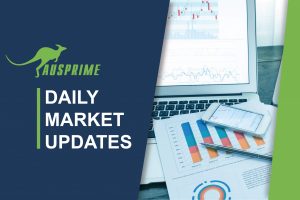MARKET UPDATE

Dollar on defensive.
The dollar struggled on Wednesday to lift off a five-month low against major peers, as worries about the U.S. economy simmered, in view of President Donald Trump’s unpredictable trade policies.
The euro hovered around a five-month peak on increased optimism for an end to the war in Ukraine.
The Canadian dollar was steady after a volatile session on Tuesday, when Trump pledged to double tariffs on steel and aluminium to 50%, only to reverse course just hours later.
The Bank of Canada decides policy later on Wednesday, with traders expecting another quarter-point interest rate cut.
The U.S. dollar index, which measures the currency against a basket of six major peers, edged up 0.08% to 103.53 in Asian trading hours, following Tuesday’s slide of 0.46% that took it as low as 103.21 for the first time since October 16.
EU to impose counter tariffs.
The European Union will impose counter tariffs on 26 billion euros ($28 billion) worth of U.S. goods from next month, the European Commission said on Wednesday, ramping up a global trade war in response to blanket U.S. tariffs on steel and aluminium.
U.S. President Donald Trump’s increased tariffs of 25% on all steel and aluminium imports took effect on Wednesday as prior exemptions, duty free quotas and product exclusions expired.
The European Commission said it will end the current suspension of tariffs on U.S. products on April 1 and will also put forward a new package of countermeasures on U.S. goods by mid-April.
The suspended tariffs apply to products ranging from boats to bourbon to motorbikes, and the EU said it would now start a two-week consultation to pick other product categories.
The new measures will target around 18 billion euros in goods, with the overall objective to ensure that the total value of the EU measures corresponds to the increased value of trade impacted by the new U.S. tariffs, the EU said.
South Korean steelmakers eye U.S. production.
Two major South Korean steelmakers are considering their investment options in new facilities as major producers worldwide brace for increased tariffs on U.S. steel and aluminium imports that came into force on Wednesday.
The options include investment in operations in the U.S., they said, although no final decisions had been made.
U.S President Donald Trump’s action to bulk up protection for American steel and aluminium producers restores effective global tariffs of 25% on all imports of the metals and extends the duties to hundreds of downstream products made from the metals, from nuts and bolts to bulldozer blades and soda cans.
The countries most affected by the tariffs are Canada, the biggest foreign supplier of steel and aluminium to the U.S., Brazil, Mexico and South Korea, which all have enjoyed some level of exemptions or quotas.
“We plan to focus more on high-value-added products and enhance our technological capabilities to produce existing products more economically,” a spokesperson for South Korean steelmaker POSCO (NYSE:PKX) Holdings said.
“We are also reviewing investment plans for upstream steel processes in the U.S. or India, but no final decision has been made yet,” the spokesperson said.
Local rival Hyundai Steel (KS:004020) is considering building a steel factory in the Southeastern part of the U.S. but nothing has been decided, a spokesperson said, adding the increased U.S. tariff would have negative impact on the Korean steel industry.
South Korea previously benefited from a duty-free steel quota under an agreement made in 2018 during Trump’s first term as president.
Important Note: The information found on Ausprime platform is intended only to be informative, is not advice nor a recommendation, nor research, or a record of our trading prices, or an offer of, or solicitation for a transaction in any financial instrument and thus should not be treated as such. The information provided does not include any specific investment objectives, financial situation and needs of any specific person who may receive it. The past performance is not a reliable indicator of future performance and/or results. Past Performance or Forward-looking scenarios are not a guarantee of future performance. Actual results may differ materially from those anticipated in forward-looking or past performance statement